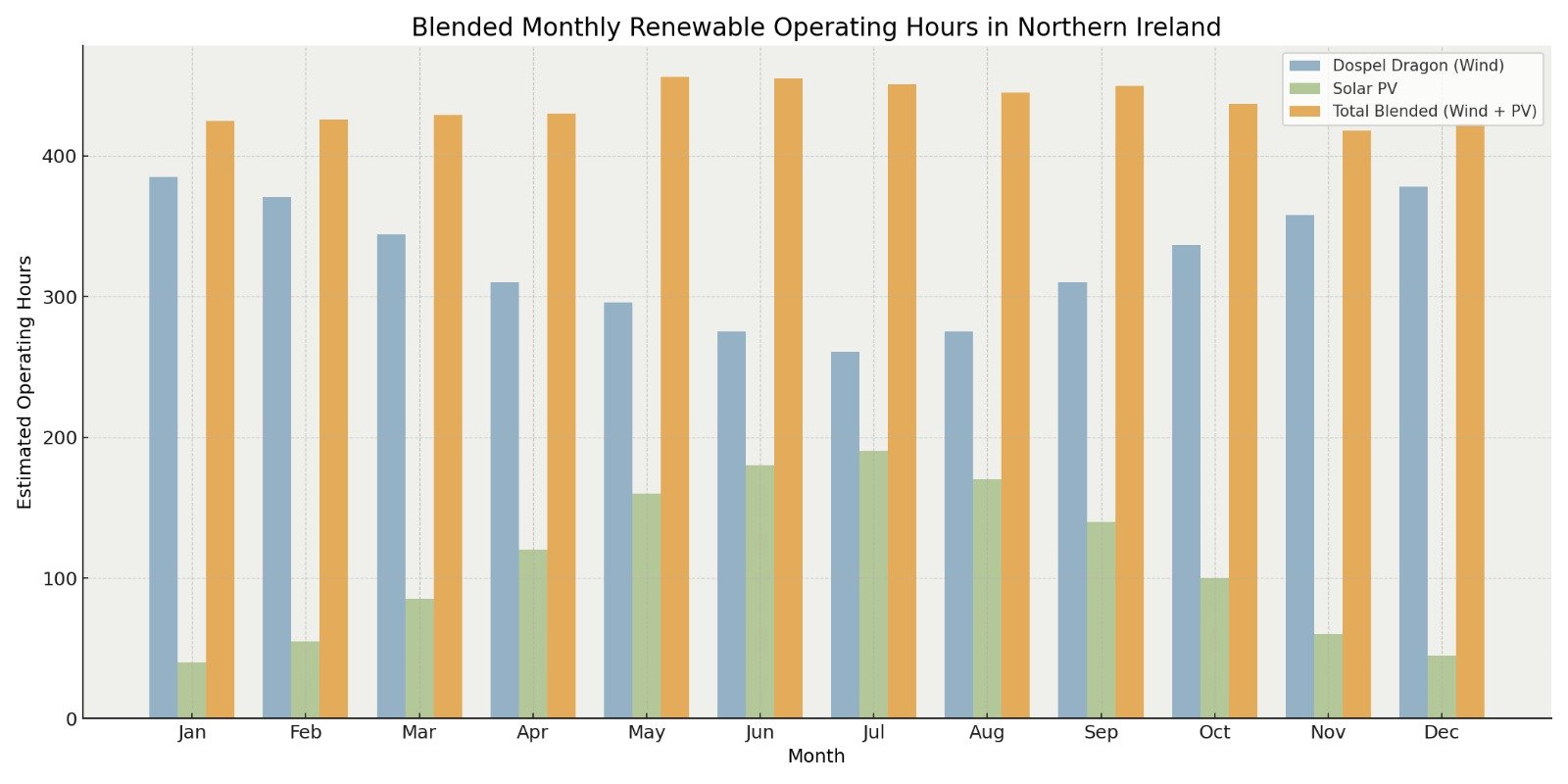
Actual Microgrids: Blended generation built around you, with grid security built in.
One-trick energy systems are over.
A single source can’t match your site’s needs year-round. By combining solar, wind, storage, and other renewable assets, you:
☀️🌬 Get 24/7 coverage (wind at night, solar by day)
📈 Reduce system oversizing and storage costs
💰 Cut bills faster with better generation/load matching
🧩 Add technologies over time with modular design
🧯 Not Everything Is a Microgrid
There are a lot of people in the renewable industry claiming that if you’ve installed solar and a battery, you’ve got a microgrid. Let’s be blunt — you haven’t. You’ve got components, not a system.
No intelligent control, no backup generation, no blended supply. Just one source of energy, a bit of storage, and the same grid export problems as everyone else. You’re still tied to DNO approval. Still exposed to downtime. Still waiting 9+ months for permission to use your own power.
A true microgrid is multi-source, grid-aware, and smart-controlled — with dispatch logic, resilience, and proper reporting baked in. That’s what we build. The rest is just solar with extras. Below is a handy comparison table for us to explain.
🔄 Why We Believe in Blended Generation
Real-world energy demand isn’t static — and neither is the weather. That’s why at Lugh, we design microgrids that blend solar, wind, battery, and backup generation — while using the grid as a stabiliser, not a crutch.
Blended generation works because it respects reality:
☀️ The sun doesn’t always shine
🌬 The wind doesn’t always blow
🔋 Batteries can’t refill themselves
⚠ And diesel isn’t cheap — or clean
With a grid connection, we can smooth out the gaps, optimise performance, and avoid the extremes of both over-engineering and underperformance.
📊 A picture says 1000 words
| ⚙️ Feature | 🔋 PV + Battery Only | 🏡 Grid-Connected Microgrid | 🏝️ Off-Grid Microgrid |
|---|---|---|---|
| 🔌 Grid Connection | ✅ Required – relies on export/import | ✅ Connected – used as backup or balance | ❌ None – operates independently |
| 🧠 Control System | ❌ None – inverter logic only | ✅ Full EMS with Lugh View | ✅ Full EMS with Lugh View |
| 📦 Generation Flexibility | ❌ Solar only (or basic battery scheduling) | ✅ Solar + Wind + Diesel/Backup + Battery | ✅ Solar + Wind + Diesel/Backup + Battery |
| 🛡 Backup Resilience | ⚠️ Limited to battery discharge | ✅ Grid and generator fallback | ✅ Generator and storage fallback |
| ⛽ Generator Integration | ❌ Not included | ✅ Optional and smart-controlled | ✅ Required and fully integrated |
| 📡 Monitoring | ⚠️ Inverter app only | ✅ Lugh View EMS with Scope 1 & 2 reporting | ✅ Lugh View EMS with Scope 1 & 2 reporting |
| 💸 Upfront Cost | 💸 Lower (limited capability) | 💸 Medium – cost vs value balanced | 💸💸 Higher – full autonomy required |
| 📈 ROI Timeline | 📉 Variable – export uncertainty | 📉 Strong – faster payback from blending | ⏳ Longer – but essential in remote sites |
| ⚡ Grid Reinforcement Costs | ⚠️ Often triggered by export; upgrades may take 3–5 years | ✅ Often avoided due to non-export design | ✅ Not applicable – no grid involved |
| 🚧 Delivery Timeline | 🕒 9+ months typical due to G99 delays; longer if reinforcement needed | ⚡ 8–12 weeks – no DNO export approval required | ⛺ 10–14 weeks – off-grid design + logistics |
🧠 The Right System Starts with the Right Team
Every project is different — and so are the right answers. A grid-connected microgrid might give you speed, flexibility and fallback. Off-grid may be your only option in a remote location. And yes, even a PV + battery install has its place.
But here’s the thing: the solution only works if it’s the right one — for you, your site, your usage, and your future.
Most renewable installers will push the same tired system they’ve installed a hundred times. A basic inverter, a handful of panels, a small battery, and maybe a flashy app. No load analysis. No multi-source blending. No idea what your actual energy profile looks like. And no long-term planning.
Why?
Because that’s all they know.
Because that’s all they’re allowed to sell.
Because real system design takes brains, time and the ability to think beyond the manual.
But this is energy.
It’s complicated.
And you’re making a 30-year investment — not buying a new kettle.
💬 Why It Matters
A poor system will lock you into years of inefficiency and missed savings
You could face export delays, grid upgrades, or compliance failures
You might outgrow your system in 3 years — and have to start again
We design systems that are tailored, scalable, and intelligent. We model loads, profile demand, blend technologies, and work with premium suppliers to build solutions that last. We don’t just “install” — we engineer.
So if you’re ready for a proper conversation about energy — not sales fluff — talk to us.
📞 Let’s Build Something That Actually Works
No cookie-cutter kits.
No cowboy shortcuts.
Just smart, honest, future-proof energy — done properly. Click the bouncy guy in the corner.


